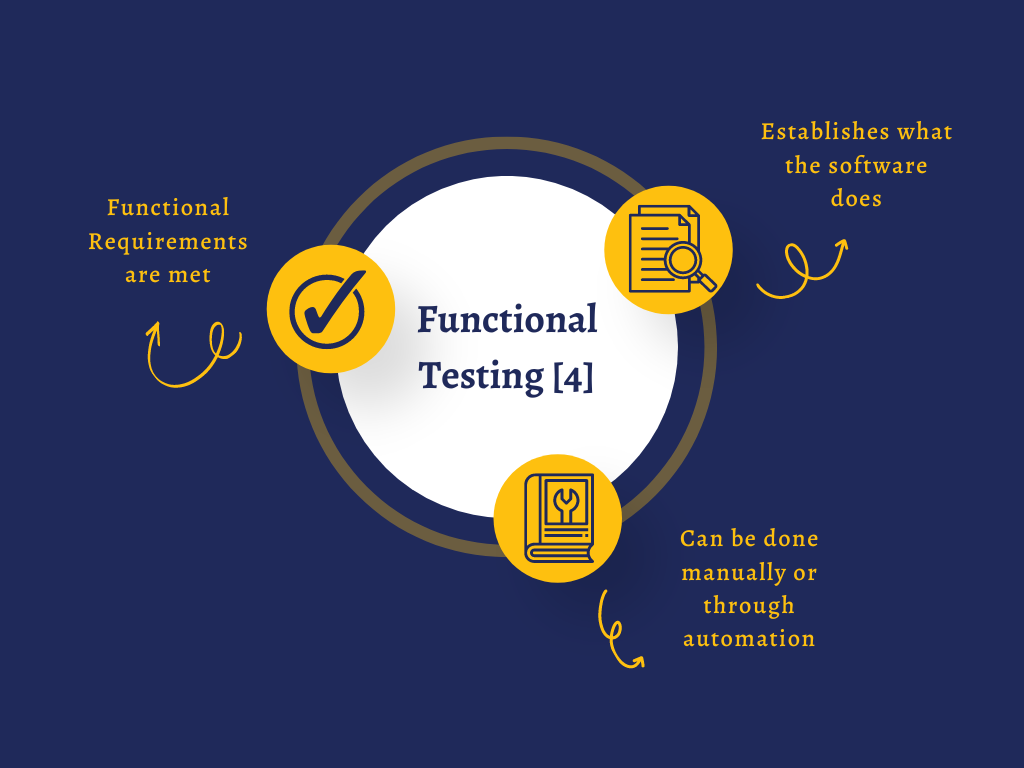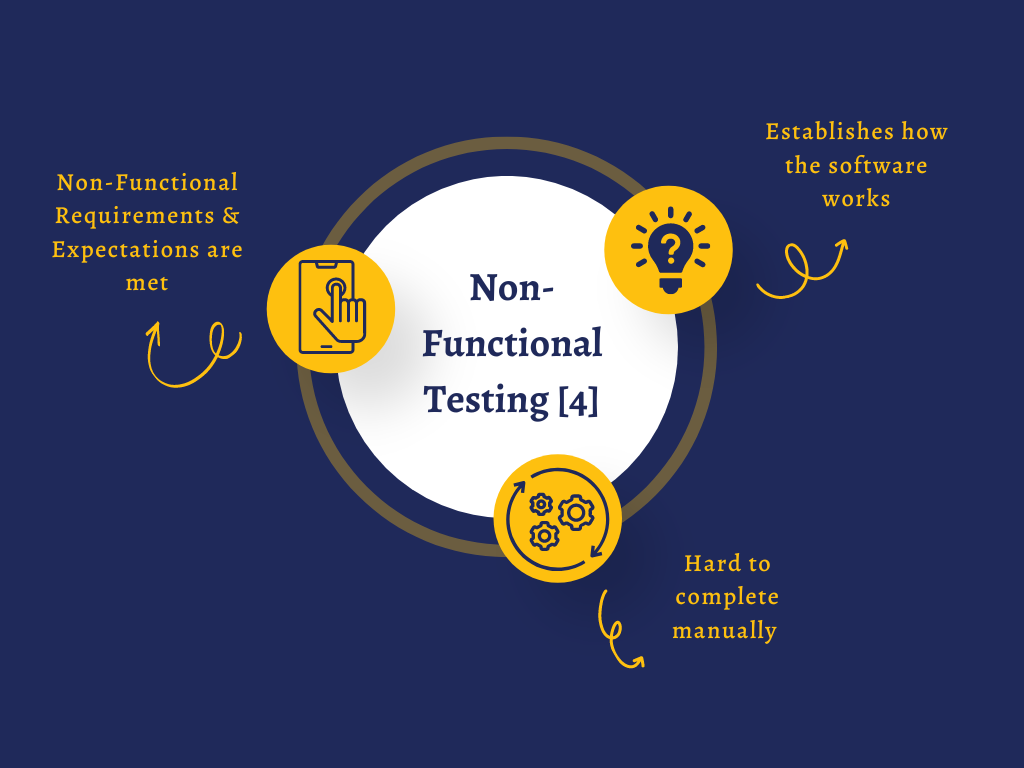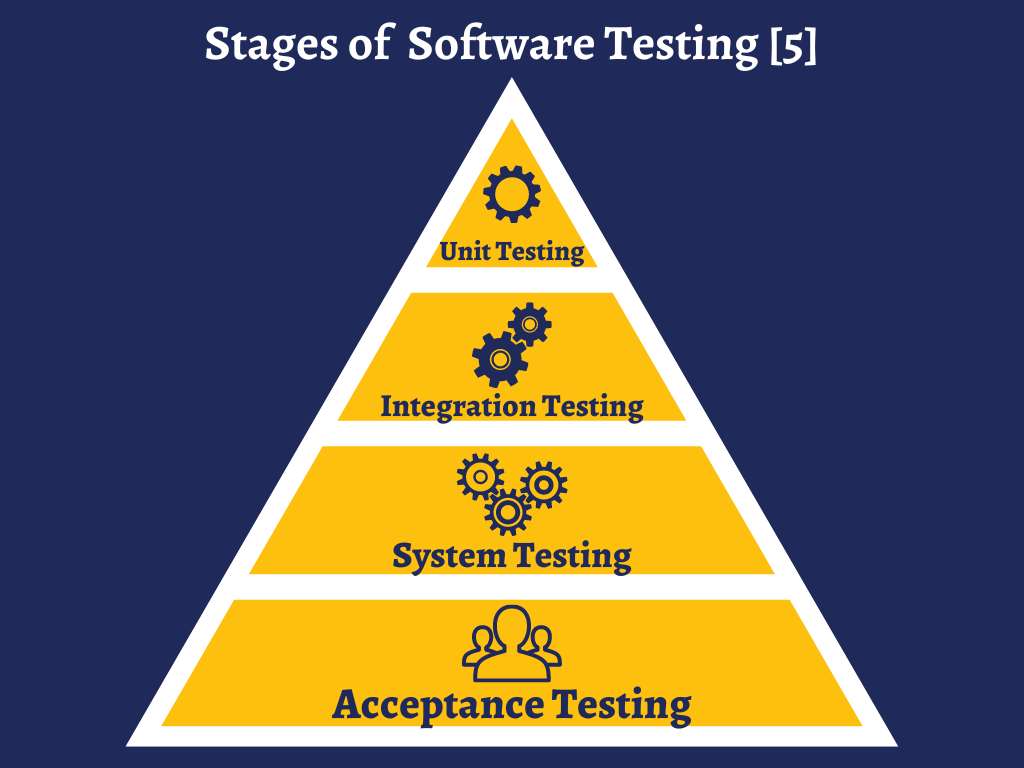
Software Testing
Software testing is an essential step in reducing software failure. It’s the process for which developers confirm that the software matches the established functional requirements [1]. However, oftentimes developers and companies opt out of the quality assurance process. 36% of respondents who were asked why they skipped testing claimed it was because they did not have enough time to do it [2]. 18% claimed it was because they thought the user would be able to test and report any bugs [2]. 15% claimed the software was a small release so testing was unnecessary [2]. All of these reasons are risky because it decreases customer satisfaction and the quality of the product. Therefore, developers need to make sure the application is bug-free, reliable, secure, and of good quality. Without this crucial step, developers and businesses may face timely and costly delays in the long term.

Importance of Software Testing
Improved Quality & Customer Satisfaction
Developers must implement quality assurance checkpoints into the testing cycle to reduce software failures. For instance, developers can test the software to make sure the functional requirements are met and the customers will be able to effectively use the product [3]. Furthermore, the compatibility of the product should be checked with other programs that it may run with [3]. By making sure requirements are met, developers will improve trust with their clients and promote continued collaboration in the future [3]. Furthermore, developers can remove bugs and improve the performance of the application, providing a higher quality product. This also improves the developers’ reputation as a reliable company [3]. Additionally, developers can use this process to ensure the product is secure so that the customer’s data is not vulnerable to cyber-attacks. Overall, software testing is crucial to ensure that customers receive reliable and secure products [3].

Long-term Benefits
Although some developers choose not to test software to save money and time in the short term, skipping this step has long-term costs. For instance, finding bugs early on in the development process is less costly than finding them in the later stages [3]. Investing in the testing process helps reduce future costly repairs. Furthermore, fixing bugs is easier to do while new features are added [3]. This allows developers to work faster than their competitors who may have to delay their deadlines to correct last-minute errors. Additionally, some developers skip the testing process, leaving the users responsible for finding the bugs. This can be costly to the company because it will hurt future projects due to the lack of reliable products. Therefore it is more cost-efficient to perform software testing during the development stage.

Types of Software Testing
Functional Testing
Functional testing is the process that tests the functionality of the software [4]. Oftentimes, test inputs are provided and developers make sure that the outputs match the expected results [4]. Developers can complete this process manually or with automated tools.

Non-Functional Testing
Non-functional testing checks the non-functional parts of the application [4]. This can include the project’s performance, reliability, and user interface [4]. Furthermore, non-functional testing ensures the customer’s satisfaction by validating the performance of the software [4]. Typically, this part is hard to perform manually and is done after functional testing to make sure the customer’s expectations are met [4].

Stages of Software Testing

Unit Testing – Individual Components
The unit testing step makes sure that each of the different components of the software is functioning as expected [5]. Developers should complete this step after each change to the application. Oftentimes, this step ensures quick resolution of any issues that come up. Furthermore, this step is commonly done by the developers before the official software testing process begins [5].
Integration Testing – Integrated Components
The next step is integration testing where the different components are tested as a group [5]. This makes sure that the components are functional and integrated. Developers use this step to ensure the fulfillment of functional requirements involving multiple components.
System Testing – Entire System
The third step is system testing. This step is crucial to make sure that different components of the completed product work together without issues [5]. This also promotes quality assurance because it ensures the fulfillment of the functional requirements as a whole. Individuals known as testers often complete this step. It is also important that the application is tested in an environment similar to the production environment [5].
Acceptance (User) Testing – Final System
The final stage of testing is acceptance testing. This step determines if the application is ready for deployment. Oftentimes, the users will test the application during this step to ensure that it meets their needs. After this step, the product is typically delivered to the consumers for use [5]. Overall, these steps ensure a reliable and high-quality product.
HITS
HITS implements software testing and quality program management to minimize risks to your organization. Furthermore, HITS takes pride in the execution of our services and settling for nothing other than 100% quality solutions for our clients. Having the right team take care of the software testing process ensures the fulfillment of functional requirements and user expectations. This helps to avoid costly and timely software project failures. If you’re looking for the right team, HITS is it! You can reach out to us directly at info@healthitsol.com. Check out this link if you’re interested in having a 15-minute consultation with us: https://bit.ly/3RLsRXR.
References
- https://www.guru99.com/software-testing-introduction-importance.html
- https://blog.testlodge.com/why-testers-skip-manual-testing/
- https://www.indiumsoftware.com/blog/why-software-testing/
- https://www.guru99.com/functional-testing-vs-non-functional-testing.html
- https://www.seguetech.com/the-four-levels-of-software-testing/